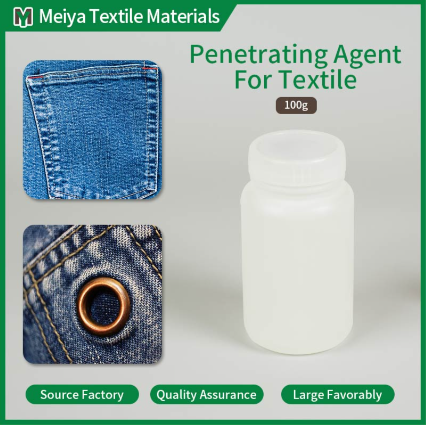Enhance Your Textile Processing With Textile Penetrant for Better Results
In the competitive textile industry, achieving high-quality results in fabric processing requires the right treatment agents. Textile Penetrant plays a pivotal role in improving the penetration of dyes, finishes, and chemicals into fabrics, ensuring uniform absorption and superior performance. As a key solution for textile manufacturers, textile penetrant helps optimize the fabric treatment process, making it indispensable for both small-scale and large-scale operations.
Jiangmen Meiya Textile Materials Co., Ltd., located in Jiangmen City, China, specializes in the research, production, and sales of textile additives, including Textile Penetrant. With over 20 years of expertise in the industry, the company provides high-quality solutions that meet the demands of modern textile production. Established in May 2016 and officially in trial production in 2018, Jiangmen Meiya is committed to providing top-tier products that enhance the efficiency and quality of textile processing.
As the textile industry demands higher quality and efficiency, Textile Penetrant offers a significant advantage by improving the effectiveness of fabric treatments. Here's why it’s essential for textile manufacturers:
Optimized Penetration for Better Results
Textile Penetrant ensures that dyes, finishes, and other chemicals are absorbed more deeply and uniformly into the fabric fibers. This leads to more consistent coloration, improved finishes, and a stronger bond between the treatment agents and the fabric. The result is better overall fabric quality, which is crucial for meeting the expectations of end consumers.
Durability and Longevity
Fabrics treated with Textile Penetrant are more durable and resistant to environmental stressors. The penetrant enhances the treatment process, helping textiles maintain their integrity over time, resist fading, and withstand wear and tear. This is essential for products that are exposed to frequent use, such as uniforms, upholstery, and industrial textiles.
Ideal for Textile Manufacturing Needs
Textile Penetrant is designed to meet the high demands of B2B textile manufacturers. Whether you are producing fabrics for fashion, industrial use, or functional textiles, this penetrant ensures optimal treatment efficiency, reduced waste, and improved product quality. For large-scale operations, Textile Penetrant streamlines the production process by ensuring uniform treatment, thereby reducing the risk of defects and minimizing production downtime.
Versatile and Suitable for a Variety of Fabrics
One of the key benefits of Textile Penetrant is its versatility. It works effectively with a variety of fabric types, including cotton, polyester, blends, and synthetic fibers. This makes it an ideal solution for manufacturers that handle diverse textile materials, providing consistent results regardless of the fabric composition. From fashion apparel to heavy-duty textiles, Textile Penetrant ensures uniform treatment across all types of textiles.
Eco-Friendly and Cost-Effective Solution for Textile Processing
Sustainability is a key concern in modern manufacturing, and Textile Penetrant aligns with eco-friendly practices by reducing chemical waste and improving the efficiency of treatment applications. By ensuring that treatment agents are absorbed more efficiently, manufacturers can reduce the use of excess chemicals, lowering production costs and minimizing environmental impact.

Jiangmen Meiya Textile Materials Co., Ltd. is committed to sustainable production practices. The company’s advanced manufacturing processes and high-quality materials ensure that Textile Penetrant and other additives meet environmental standards, helping textile manufacturers achieve their sustainability goals.
Boost Your Textile Production Efficiency
Incorporating Textile Penetrant into your textile production process helps streamline operations and improve treatment quality. By ensuring deeper and more consistent penetration of chemicals and dyes, this penetrant reduces waste, speeds up processing times, and enhances fabric performance. This leads to cost savings, improved product quality, and increased customer satisfaction—critical factors for success in the competitive textile industry.
